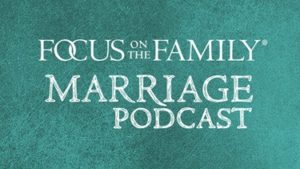Opposition to parental spanking has been growing significantly in elite circles over the past decade or so. Critics are claiming that spanking a child is not only abusive, but that it also promotes youthful violence and contributes to adult dysfunction. Your question seems to reflect this trend.
So how about it? If you spank your child, are you teaching her that violence is an acceptable way to solve problems or deal with conflicts? Are you running the risk that she will one day apply this lesson with disastrous results in her relationships with other people? Our response is simple: everything depends on your attitude and approach. As we see it, the question is not whether to spank, but how to spank.
To say it another way, you have to know the difference between an appropriate spanking and physical abuse. Unfortunately, this is precisely what many of the studies critical of spanking have failed to do. In fact, the research upon which these studies are based commonly includes openly abusive forms of physical punishment, such as kicking, punching, and beating, all under the umbrella of “corporal punishment.” No wonder they conclude that this kind of “punishment” is associated with negative outcomes!
What, then, is an “appropriate” spanking? We’d define it in the following terms:
- It’s physically non-injurious.
- Its sole intent is to modify behavior.
- It’s administered only to the extremities or the buttocks.
- It’s applied methodically rather than impulsively.
- It’s never employed as an expression of anger.
- It’s used selectively and in combination with other forms of discipline (time-outs, restrictions, taking away privileges, etc.).
- It’s regarded as a “last resort” and reserved only for situations involving willful disobedience or defiance of authority.
- It takes place within the context of a loving parent-child relationship.
- It’s always followed by a “talk” designed to clarify the reasons for the disciplinary action.
- It is not to be administered to children under eighteen months of age.
Spankings administered in accordance with these specifications have never been shown to be harmful to children in any way. This was borne out by a six-year longitudinal study of a racially mixed population of 1,112 children ages four to eleven reported in the Archives of Pediatric and Adolescent Medicine. That study concluded, “Regression analysis within sub-groups yielded no evidence that spanking fostered aggression in children younger than six years, and supported claims of increased aggression for only one sub-group: eight- to eleven-year-old white boys in single-mother families.”(This last point suggests that spanking may not be the best option when there are other “family management” problems in the home).
Meanwhile, other research has suggested that childhood aggression may be closely linked with maternal permissiveness and negative criticism. There may even be reason to suppose that this connection is stronger than that between aggression and outright abuse. Further, some studies have indicated that there can actually be an increase in child abuse in homes where appropriate spanking does not occur. The reason? When parents are frustrated by the lack of this effective disciplinary tool, they are sometimes driven to extreme emotional reactions.
Before closing, we should add that it may be dangerous to spank a child for hitting another youngster. It’s also cause for concern when corporal punishment is the only tool in mom and dad’s disciplinary toolbox. In both cases, there’s a chance that spanking might communicate an unhealthy message about the value and uses of power (for example, “might makes right”). But it’s important to balance this statement with a reminder that power isn’t always a bad thing, and that spanking is only one expression of parental power.
There are, in fact, many occasions when the exercise of power and firm control is absolutely essential to effective parenting. Parents have to respond decisively when a toddler refuses to sit in his car seat or when a young child tries to break away from mom and run across a busy street. Here again, the point is not that power is “bad,” but that it has to be used judiciously and appropriately. We should also mention that spankings generally lose their effectiveness as a child enters into and progresses through the elementary school years. As alternatives to corporal punishment, parents should experiment with time-outs, the suspension of privileges (such as computer- or TV-time), or the temporary confiscation of a favorite game or toy.
If you feel it would be helpful to discuss these ideas at greater length, don’t hesitate to give our staff a call. Our counselors would be more than happy to discuss your feelings with you over the phone. They can also provide you with referrals to qualified family therapists in your area who specialize in parenting and disciplinary issues.
Resources
Other books on Discipline
Referral
American College of Pediatricians
Articles
Effective Biblical Discipline










